Prospecting Fundamentals: What is Prospecting?
Introduction to Prospecting
In the world of sales, prospecting stands as a critical starting point. why start prospecting? It's the active process of identifying potential customers, known as prospects, for your business. This stage is not just about generating leads; it's about initiating the first crucial step towards a successful sale.
The essence of Prospecting: At its core, successful prospecting is about understanding your potential customers and determining the best way to approach them. This involves a deep dive into market analysis and utilizing sales prospecting tools to identify those who might benefit from your product or service.
Initial Contact: The process begins with making contact, which could be anything from a phone call to a targeted email. The aim here is to gauge interest and establish a connection.
The Importance of Prospecting in Sales
Prospecting is not just a preliminary phase for new business; it's the foundation of the entire sales process.
- Fuels the Sales Pipeline: Prospecting efforts populate the sales pipeline, crucial for maintaining a consistent flow of potential deals. Without it, the pipeline can quickly dry up, leading to future revenue challenges.
- Informed Customer Approach: Understanding the prospect’s needs and pain points is key. This knowledge allows for a more tailored and effective sales strategy, increasing the chances of successful conversions.
- Efficient Resource Allocation: By identifying the most promising leads, this prospecting strategy ensures that time and energy are focused on potential customers most likely to make a purchase.
- Building Long-Term Relationships: The initial prospecting interaction sets the tone for the entire customer relationship. It's an opportunity to establish trust and lay the groundwork for future interactions.
- Adaptability to Market Changes: Regular prospecting helps businesses stay attuned to changing market conditions and customer needs, allowing for timely adjustments in strategies and offerings.
Prospecting is a fundamental skill for any top sales rep or professional. It requires a blend of market knowledge, strategic planning, and interpersonal skills. Effective prospecting fills the sales rep's pipeline and ensures that the leads within are of high quality, setting the stage for future sales success.
The Sales Prospecting Process Explained
Lead vs. Prospect
Understanding the distinction between a lead and a prospect is fundamental in the sales prospecting process.
Defining a Lead: A lead is an individual or entity that might have shown some level of interest in your product or service. They could be someone who filled out a form on your website or engaged with your company via social media.
- Initial Contact: Leads often come from various channels like social media, direct mail, or even cold-calling efforts. The interaction at this stage is usually minimal.
Evolving into a Prospect: A prospect is a qualified lead. This means they have been assessed and are deemed more likely to purchase based on specific criteria like budget, authority, and need.
- Deeper Engagement: Prospects are engaged with more tailored communication, leveraging insights gathered during the qualification process.
The Sales Prospecting Process
The sales prospecting process is a systematic approach to identifying and reaching potential customers.
- Research and Identify: This initial phase involves gathering data on potential leads and segmenting them based on factors like industry, company size, or potential customer pain points.
- Reach Out and Engage: Using the data gathered, your sales managers and reps initiate contact through personalized emails, phone calls, or social selling on platforms like LinkedIn.
- Follow-up and Nurture: Consistent follow-up is key. It involves nurturing the relationship, addressing queries, and providing additional information to move the sales lead further down the sales funnel.
Key Stages of the Sales Process
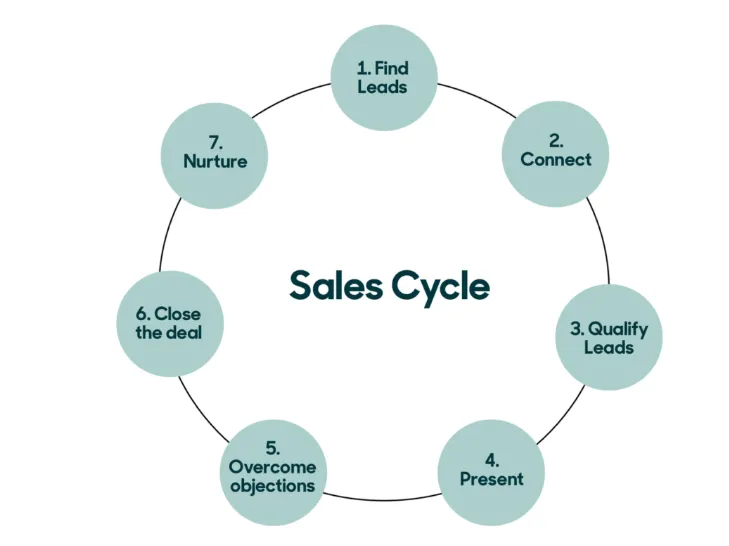
The sales process encompasses several key stages, each critical for converting a prospect into a paying customer.
These are the stages:
- Prospecting and Lead Generation: Identify potential leads through various channels, including social media platforms, networking events, and cold calling.
- Qualifying Leads: Assess leads against criteria like budget and decision-making authority to qualify leads and determine if they are sales-qualified leads.
- Presentation and Pitching: Tailor your product or service presentation with a personalized pitch to address each qualified lead's unique needs and pain points.
- Objection Handling: Be prepared to address common objections and concerns, reinforcing the value proposition of your offering.
- Closing the Deal: Apply effective sales techniques to convert prospects into paying customers.
- Post-Sale Relationship Building: Foster long-term relationships through continuous engagement, seeking feedback, and offering post-sale support.
The sales prospecting process is an integral part of the broader sales cycle. It demands a strategic blend of research, communication skills, and persistence. Mastering this process can lead to a more efficient sales pipeline, better customer relationships, and increased sales productivity and success.
Creating an Ideal Customer Profile
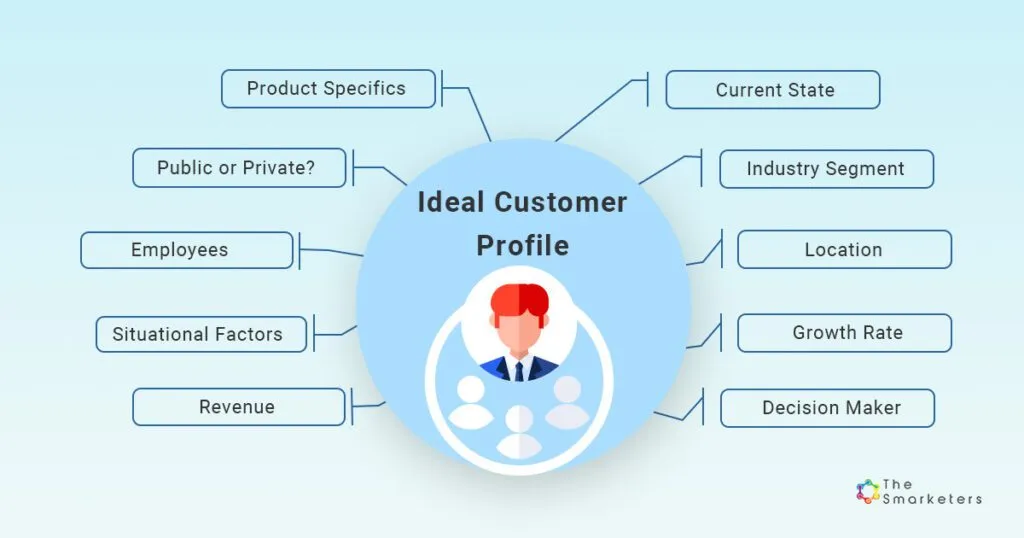
Introduction to Ideal Customer Profiles
An Ideal Customer Profile (ICP) is a detailed representation of a company's perfect customer. It's a blueprint that helps sales and marketing teams effectively identify, understand, and target their most valuable prospects.
Defining an ICP: An ICP outlines the characteristics of a company's ideal buyer. It includes demographics, firmographics, pain points, and various attributes that describe the best customer for a particular product or service.
Why an ICP Matters: A well-defined ICP allows businesses to focus their resources on engaging with leads most likely to convert into loyal customers. This precision targeting enhances the overall efficiency and success of the sales process.
Understanding the Importance of an Ideal Customer Profile in Sales Prospecting
- Enhanced Targeting and Efficiency: By focusing on leads that closely match the ICP, businesses can more effectively allocate their resources, resulting in a more efficient sales process.
- Marketing Alignment: With a clear understanding of the ideal customer, marketing efforts can be more precisely tailored, ensuring that campaigns resonate deeply with the target audience.
- Product and Service Optimization: Knowledge of the ideal customer aids in refining product or service offerings to meet specific market needs better, addressing pain points more effectively.
- Alignment Between Sales and Marketing: A shared ICP ensures that both the sales team and marketing teams work towards a common goal, fostering cohesion in customer acquisition and engagement strategies.
- Streamlined Lead Qualification: An ICP helps quickly identify whether a lead fits the desired profile, making the qualification process more efficient and ensuring a high-quality sales pipeline.
- Informed Business Decisions: An ICP guides decisions regarding product development, marketing department sales prospecting methods, and customer engagement strategies, aligning them with the preferences of the target market.
An Ideal Customer Profile is a strategic tool that goes beyond theoretical concepts, playing a significant role in enhancing the effectiveness of outbound sales prospecting. It brings clarity and focus to outbound sales prospecting efforts, ensuring that teams target and engage with the most relevant and valuable prospects.
Conducting Thorough Research
Utilizing Customer Data and Market Analysis
Developing an Ideal Customer Profile (ICP) begins with comprehensive research, crucial for targeted sales prospecting strategies.
- Deep Dive into Customer Data: Start by exploring customer data. This includes analyzing purchase histories and feedback, which can shed light on pain points and buying behaviors, crucial for understanding potential buyers and existing customers.
- Conducting Market Analysis: Extend your research to include market analysis. Study industry trends and competitor strategies using tools like Crunchbase for market insights. This helps in identifying high-value targets and understanding the sales cycle.
Leveraging Sales Prospecting Tools for Research
Employing the right sales prospecting tools is key to an efficient sales prospecting game and effective research.
- Selecting Prospecting Tools: Use tools like HubSpot and Salesforce for data analytics and LinkedIn Sales Navigator for social selling insights. These tools provide a wealth of information on potential customers and sales prospects.
- Social Media as a Research Tool: Platforms like Twitter and other social media channels are rich sources for prospecting. They offer real-time insights into market trends and customer preferences.
Step-by-Step Guide to Conducting Research
- Gather and Analyze Data: Collect data from CRM systems and sales records. Pay attention to details that hint at the buyer persona and their buying process. Look for patterns in purchasing habits, preferences, and feedback.
- Market and Competitor Analysis: Use market analysis tools for broader insights and identify your prospect's pain points. Use industry reports and market analysis tools to understand broader trends and customer needs. Evaluate competitor offerings and strategies to identify market gaps and opportunities.
- Use Prospecting Tools: Implement sales prospecting tools for deeper data analysis, focusing on potential buyers and sales-qualified leads.
- Monitor Social Media: Leverage social media platforms for real-time market and customer insights.
- Synthesize Insights: Integrate all data to form a well-rounded understanding of your ideal customer, focusing on their needs and how your product or service can meet them.
This approach ensures a detailed and methodical process for creating an ICP, vital for effective prospecting and sales success.
Defining What Constitutes a Good Prospect

Criteria for Identifying High-Potential Sales Prospects
.webp)
Identifying what makes a good prospect is crucial in streamlining the sales prospecting process and filling the sales pipeline with high-quality leads.
- Alignment with Ideal Customer Profile (ICP): A high-potential prospect should closely match your ICP. This includes similarities in industry, company size, challenges faced, and specific needs that your product or service can address.
- Decision-Making Authority: Prospects should have the authority to make or influence buying decisions. Identifying decision-makers or key influencers within an organization is a key criterion.
- Budget Compatibility: The prospect should have the financial capacity to purchase your product or service. Understanding their budget constraints is essential to qualify them as a good prospect.
- Need for Your Offering: The prospect should have a clear need or pain point that your offering can solve. This ensures that your product or service is relevant to them.
How to Evaluate Prospect Quality
Evaluating the quality of prospects is an ongoing process in sales prospecting.
- Engagement Level: Monitor how engaged prospects are with your marketing campaigns, social media content, or sales outreach. High engagement levels often indicate a strong interest in your offering.
- Prospect's Pain Points: Understand and document each prospect's specific challenges. This insight helps in tailoring your sales pitch to address their unique needs.
- Sales Qualified Leads (SQLs): Use criteria such as lead scoring to distinguish SQLs from other leads. SQLs are prospects who have been vetted and are considered ready for direct sales engagement.
- Feedback and Interaction Analysis: Analyze feedback from initial interactions. Positive responses or inquiries about your product or service indicate a higher quality prospect.
Building a Comprehensive Target List
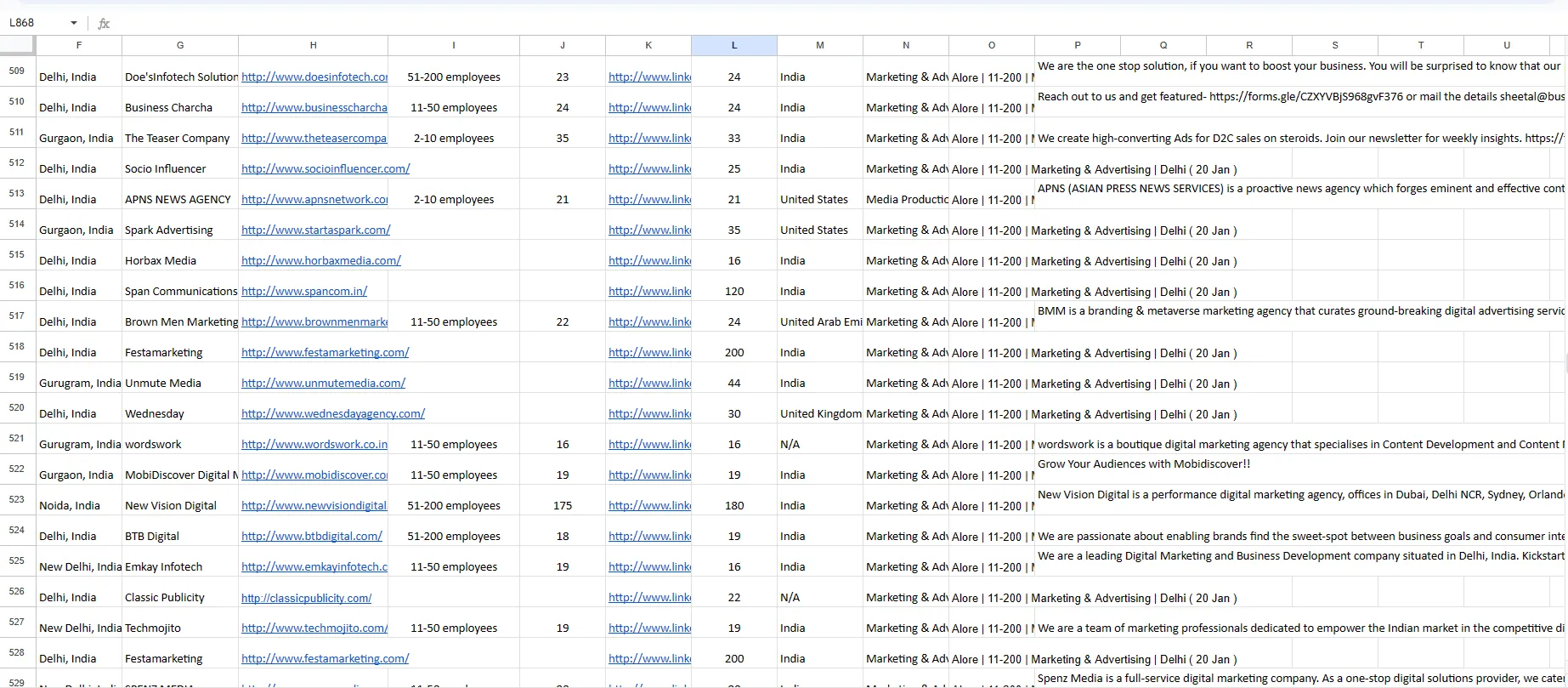
Identifying and Categorizing Potential Buyers
Creating a comprehensive target list is crucial in effective sales prospecting, ensuring a focused approach toward contacting potential customers and buyers.
- Utilize Market and Customer Data: Begin by analyzing market trends and customer data. This helps in identifying potential buyers who are most likely to need your product or service.
- Consider Various Buyer Attributes: Look at attributes such as industry, company size, location, and specific needs. Understanding these aspects can help categorize potential buyers effectively.
- Leveraging Sales Prospecting Tools: Use tools like LinkedIn Sales Navigator and CRM software to gather detailed information about potential buyers, which aids in better categorization.
Strategies for Segmenting Your Target List
Once potential buyers are identified, segmenting them into different categories based on certain criteria enhances the focus of sales efforts.
- Segmentation Based on Needs and Pain Points: Group potential buyers based on their unique needs and challenges. This allows for tailored communication and solutions for each segment.
- Industry-Specific Segmentation: Organize your target list by industry verticals. This helps in creating industry-specific pitches and understanding unique market demands.
- Prioritizing High-Value Prospects: Identify and prioritize high-value targets – those who offer the most potential for business growth. This could be based on factors like potential order size, strategic value, or likelihood of long-term partnership.
- Behavioral Segmentation: Use engagement data from your marketing campaigns or website to segment potential buyers based on their behavior and interactions with your brand.
Focusing on Existing Buyers and Accounts
![10 Easy Steps to Creating a Customer Profile [+ Templates]](https://cdn.prod.website-files.com/645258dee17c72222bca47d8/65b1bd1ec72246eb67f82f73_customer-profiling_1.webp)
Leveraging Existing Customer Relationships
In sales prospecting, paying close attention to existing buyers and accounts is a strategic move, often leading to increased sales and enhanced customer loyalty.
- Deepen Relationships for Upselling and Cross-Selling: Existing customers, already familiar with your product or service, present opportunities for upselling and cross-selling. Understanding their ongoing needs can open doors to offering them more comprehensive solutions or additional products.
- Gather Valuable Feedback: Use interactions with existing customers to gather feedback. This can provide insights into product improvements, potential new offerings, or even referrals.
- Referral Opportunities: Satisfied customers are often willing to refer new potential buyers. Encourage and incentivize them to refer others to your business, effectively expanding your potential customer base.
Sales Process Optimization with Current Clients
Optimizing your sales process with current clients enhances efficiency and contributes to customer satisfaction and retention.
- Customize Communication and Offers: Tailor your communication and offers based on the history and preferences of existing clients. Personalized engagement increases the likelihood of repeat business.
- Use CRM Tools for Relationship Management: Implement CRM tools to manage and analyze customer data effectively. These tools can help identify sales opportunities and manage follow-ups with existing clients.
- Analyze Buying Patterns for Predictive Sales: Analyze the buying patterns of current clients to predict future sales opportunities. This can guide inventory management and marketing strategies.
- Training Sales Teams: Train sales reps and sales teams in relationship management and customer retention strategies. Equip them with the skills needed to nurture and educate prospects and grow existing client relationships.
Targeting Past Buyers and Opportunities
Re-engaging with Previous Customers
Revitalizing connections with past buyers is a critical component of successful prospecting, offering avenues to re-establish trust and explore new business opportunities.
- Tailored Communication: Reach out to past buyers with messages that resonate with their previous purchasing experiences. Mention specific products or services they showed interest in and introduce them to new offerings that align with their buying history.
- Exclusive Offers: Encourage repeat business by offering exclusive deals or early access to new products. This strategy can re-spark interest among previous customers.
- Gathering Insights: Use re-engagement as an opportunity to gather feedback, which is invaluable in refining your sales prospecting strategies and product or service enhancements.
Analyzing Past Sales for Future Prospecting
A thorough analysis of past sales can unlock insights for refining future prospecting efforts, identifying high-value targets, and understanding the sales cycle better.
- Pattern Recognition: Dive into past sales data to spot trends and successful sales pitches. This analysis can reveal which strategies resonated best with different customer segments, including potential buyers and existing customers.
- Learning from Past Engagements: Evaluate both successful and unsuccessful sales to identify areas for improvement. This can include assessing the effectiveness of different sales prospecting techniques and sales prospecting tools.
- Data-Driven Segmentation: Segment your past buyers based on their purchasing patterns and feedback. This segmentation helps in personalizing future outreach and tailoring your sales pitch to meet specific customer needs.
- Forecasting Future Trends: Leverage historical sales data to anticipate future buying trends and customer preferences. This forward-looking approach is essential for staying ahead in dynamic market conditions.
Expanding Through Your Professional Network

Utilizing Connections for Prospecting
Leveraging your professional network is pivotal in the sales prospecting process, offering a pathway to connect with potential customers and sales prospects.
- Engage with Sales Reps and Teams: Collaborate with your own sales reps and sales teams to tap into their professional networks. Their connections can provide valuable leads.
- Maximize Referral Opportunities: Encourage your network, including existing customers and sales professionals, to refer potential buyers. This can significantly expand your reach.
- Digital Networking on Social Media Platforms: Utilize social media platforms for networking. Engaging with industry leaders and potential clients on these platforms can open up new prospecting opportunities.
Networking Strategies for Identifying Prospects
Adopting effective networking strategies is crucial for identifying high-value targets and qualified leads.
Strategic Participation in Industry Events: Attend industry events, webinars, and seminars. These are excellent opportunities for prospecting game and meeting potential buyers and decision-makers.
Building Relationships for Long-Term Gains: Focus on nurturing relationships rather than immediate sales. This long-term approach can lead to a more sustainable pipeline of sales prospects and potential customers.
Utilize Advanced Tools: Incorporate tools like LinkedIn Sales Navigator and other sales prospecting tools to enhance your networking strategy, making connecting with the right prospects easier.
Consistent Follow-Up: Develop a follow-up strategy to stay in touch with new contacts. Regular communication can turn a casual connection into a serious sales prospect or even a paying customer.
Seeking High-Value Targets
Identifying and Prioritizing High-Value Prospects
Targeting high-value prospects is essential in sales prospecting, focusing on those who offer the most potential for significant business impact.
Data-Driven Identification: Utilize customer data, including company size or how many employees, to identify high-value prospects. These metrics often correlate with potential purchasing power and the scale of opportunity.
Employ Advanced Sales Prospecting Tools: Utilize tools like Salesforce and LinkedIn Sales Navigator. These platforms can provide deeper insights into prospects, including key decision-makers and company dynamics.
Compatibility Assessment: Evaluate prospects based on their compatibility with your product or service, considering factors like industry relevance and specific needs.
Long-Term Value Consideration: Prioritize prospects not only for immediate sales potential but also for their capacity for long-term partnership and repeat business.
Sales Pipeline Management with High-Value Targets
Managing your sales pipeline with a focus on high-value targets ensures that your sales efforts are strategically invested.
Pipeline Segmentation: Segregate your sales pipeline to focus on high-value targets specifically. This segmentation allows for more personalized sales strategies.
Continuous Monitoring: Regularly review the progress of high-value targets through your pipeline. Pay attention to their interactions, feedback, and engagement levels.
Tailored Engagement: Develop specialized engagement strategies. Consider their unique business challenges, such as "prospect's pain points" and specific industry demands.
Utilize Analytics for Optimization: Track the journey of high-value prospects using analytics tools. This monitoring helps in understanding their decision-making process and optimizing your sales approach.
Identifying Decision Makers
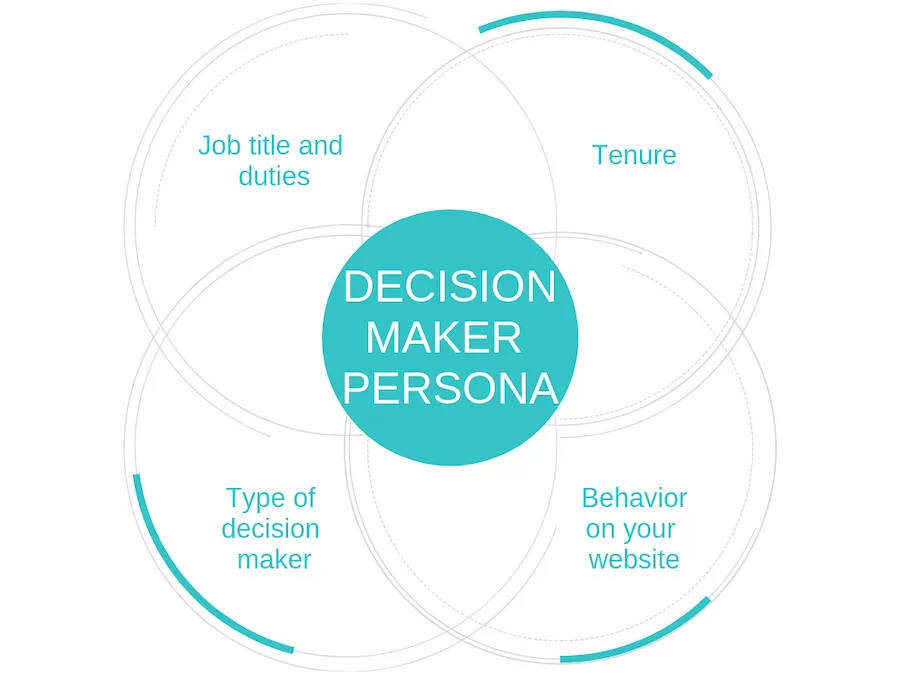
Strategies to Reach and Engage Decision Makers
Successfully targeting decision-makers is crucial in the sales prospecting process, especially when focusing on high-value targets and qualified leads.
Research and Identify Key Players: Utilize sales prospecting tools like LinkedIn Sales Navigator and CRM systems to identify key decision makers. Consider factors like their role, influence within the company, and relevance to your product or service.
Tailored Communication: Customize your outreach and sales pitch to address the specific needs and business challenges of decision-makers. Utilizing customer data can aid in crafting messages that resonate.
Utilize Industry Insights: Leverage insights from market analysis and sales prospecting techniques to demonstrate your understanding of the decision maker's industry and the challenges they face.
Networking and Referrals: Utilize your professional network, including existing customers and sales reps, to gain introductions to these key individuals.
Effective Communication with Key Decision Makers
Communicating effectively with decision-makers is a pivotal skill in sales, impacting the sales process and potential for closing deals.
Clear, Concise Messaging: Ensure your communication is straightforward and directly addresses their pain points, using a personalized pitch to highlight how your product or service provides a solution.
Establish Credibility: Share success stories, testimonials, and relevant data that showcase your track record and build trust. This can be particularly effective in B2B contexts, where decision-making is often data-driven.
Active Listening for Tailored Solutions: Engage in active listening during interactions to understand their specific concerns, which can inform your sales prospecting strategy and approach.
Strategic Follow-Up: Implement a follow-up strategy that keeps you in contact with the decision-maker without overwhelming them. Use this opportunity to provide additional information or answer any questions they may have.
Enhancing Your Sales Prospecting Techniques
11 Top Unique Sales Prospecting Tips for Effective Outreach
Customize Communication for Each Prospect: Tailor your approach based on the prospect's business model, industry, and specific needs, using insights from customer data and CRM tools.
Active Engagement on Social Media Platforms: Utilize LinkedIn, Twitter, and other social media channels for both outreach and engagement, focusing on the prospect's pain points and industry trends.
Referral Programs with Existing Customers: Encourage current clients and sales reps to refer new prospects, providing incentives for successful referrals.
Effective CRM Utilization: Use CRM systems to track potential buyers, manage sales prospects, and analyze customer interactions for targeted prospecting.
Innovative Cold Emailing: Craft compelling subject line lines and personalized content in your cold emails to engage potential customers effectively.
Strategic Content Marketing: Develop educational content and marketing materials that address the prospect's challenges, positioning your brand as a solution provider.
Networking and Industry Events Participation: Attend seminars and webinars to connect with decision-makers and high-value targets.
Solution-Focused Selling: In conversations and pitches, emphasize how your product or service can solve the prospect's unique challenges.
Qualifying Leads Effectively: Employ sales prospecting techniques and tools to qualify leads, ensuring sales team reaches and focuses on high-potential prospects.
Ongoing Sales Team Training: Continuously train your sales team in new prospecting strategies and best sales prospecting tips to maintain effectiveness.
Feedback Integration: Establish a feedback loop to gather insights from successful and unsuccessful sales attempts, continuously refining your techniques.
How to Refine Your Sales Prospecting Strategy
Assessment of Sales Prospecting Processes: Regularly evaluate your sales prospecting process, identifying areas for improvement and growth potential.
Incorporate Advanced Sales Tools: Stay ahead by adopting the latest in sales prospecting tools and technology, like LinkedIn Sales Navigator, for targeted outreach.
Data-Driven Strategy Development: Deeply analyze sales data, market trends, and customer feedback to inform your prospecting approach.
Diversified Prospecting Channels: Implement a multi-channel strategy, combining cold calling, social selling, email marketing, and direct mail for wider reach.
Tailored Strategies for Different Market Segments: Customize your prospecting approach for each market segment, addressing their unique characteristics and buying process.
Adaptability and Continuous Learning: Keep abreast of industry changes and adapt your strategies to remain relevant and effective in your prospecting efforts.
Mastering the Art of Sales Prospecting
Framework 1: GPCTBA/C&I Sales Qualification Framework

The GPCTBA/C&I framework is a robust approach to the art of sales prospecting designed to optimize sales prospecting techniques and strategies.
Applying the GPCTBA/C&I Model for Effective Prospect Qualification
- Goals: Understand the long-term and short-term goals of potential buyers. This insight helps in tailoring your sales prospecting strategy to align with their objectives.
- Plans: Investigate the plans and actions they've undertaken or plan to undertake, offering insights into how your product or service can support these initiatives.
- Challenges: Identify challenges or pain points, including any barriers in their buying process, to position your offering as a solution.
- Timeline: Clarify their timeline for achieving goals, which can influence the urgency of your sales approach and pipeline management.
- Budget: Determine their budget constraints or allocations, aligning it with the pricing of your product or service.
- Authority: Establish who holds decision-making power, a key factor in streamlining the sales process and targeting your communication effectively.
- Consequences and Implications: Discuss both the negative consequences of inaction and the positive implications of achieving their goals, highlighting the value of your offering.
Framework 2: BANT Framework for Prospect Qualification
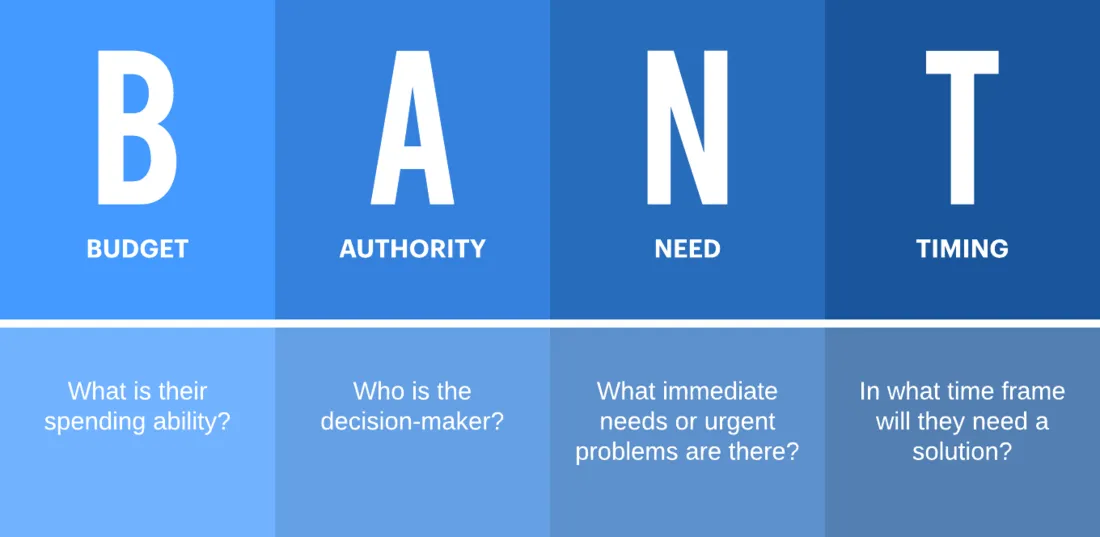
The BANT framework remains a cornerstone in sales prospecting techniques, guiding sales reps and teams in effectively identifying and qualifying prospects.
- Budget Assessment: Determine the prospect's budget. Understanding their financial capacity is key for aligning your product or service with potential buyers, and it's essential for successful prospecting and lead generation.
- Authority Identification: Focus on engaging with the decision-makers or those who have influence over buying decisions. This step is crucial in the sales process, ensuring that you're interacting with the right prospects.
- Understanding Need: Assess if there is a genuine need for your offering. This involves evaluating how your product or service can solve a specific problem or improve their situation, a crucial aspect of sales prospecting important for both potential customers and existing customers.
- Timeline Consideration: Gauge the prospect's purchasing timeline. This knowledge helps in prioritizing and managing your sales pipeline effectively, ensuring timely follow-ups and interactions.
Framework 3: CHAMP Sales Methodology

The CHAMP sales methodology provides a structured approach to sales prospecting, focusing on Challenges, Authority, Money, and Prioritization. This framework is instrumental in identifying and engaging with high-quality leads.
- Challenges: Start by identifying the primary challenges faced by the prospect. This understanding allows you to position your product or service as a solution, addressing their specific issues and pain points.
- Authority: Determine who has the decision-making authority within the prospect's organization. Engaging directly with these key individuals can streamline the sales process and enhance the chances of a successful outcome.
- Money: Assess the prospect's budget and financial capacity. This step is crucial to ensure that the solutions you propose are financially feasible for the prospect, aligning with their potential spending power.
- Prioritization: Understand the prospect's priorities. This insight helps in tailoring your pitch to what matters most to them, ensuring that your solution aligns with their top priorities and urgent needs.
Utilizing Career Insights for Prospecting
Leveraging career insights, especially from platforms like LinkedIn and Twitter, provides a strategic edge in understanding and connecting with potential prospects.
Leveraging Career Pages to Understand Prospects
- Gleaning Insights from Organizational Changes: Career pages on LinkedIn offer valuable information about a company's growth, shifts in priorities, and departmental expansions, guiding sales reps in targeting the right prospects.
- Analyzing Role Descriptions for Need Assessment: Job postings can reveal specific challenges or initiatives a company is undertaking. This information is crucial for tailoring your sales pitch to address these needs.
- Cultural Alignment: Understanding a company's culture, as portrayed on LinkedIn, can assist in aligning your communication style and values, fostering better engagement.
The Role of Social Media in Sales Prospecting: Focusing on Twitter and LinkedIn
- Twitter for Real-Time Insights: Monitor Twitter for the latest updates from prospects and industry trends. Engage with prospects' content to increase visibility and initiate conversations.
- LinkedIn for In-Depth Professional Insights: Utilize LinkedIn to gain comprehensive insights into a prospect's professional background, their company's hierarchy, and key decision-makers.
- Engagement Strategies on Social Platforms: Actively participate in discussions, share relevant content, and connect with potential buyers on both Twitter and LinkedIn. This enhances your network and positions you as a knowledgeable figure in your field.
- Prospecting Through LinkedIn Sales Navigator: Leverage tools like LinkedIn Sales Navigator for targeted prospecting. It enables sales professionals to filter and identify prospects based on specific criteria such as role, industry, company size, and more.
Classifying Prospects for Strategic Engagement
In sales prospecting, classifying prospects based on their potential value is essential for strategic engagement and effective allocation of resources.
Developing a Rating System: High, Medium, and Low Potential Prospects
- High Potential Prospects: These are prospects with significant decision-making authority, a clear need for your product or service, and an adequate budget. They often represent large organizations or are in a rapid growth phase.
- Medium Potential Prospects: These prospects may have some but not all of the ideal characteristics. They might be in smaller companies or have a less immediate need for your product.
- Low Potential Prospects: These are prospects with limited decision-making power, smaller budget capacities, or a less urgent need for your product. They might be valuable for long-term nurturing but are not immediate priorities.
Tailoring Communication Strategies Based on Prospect Ratings
- High Potential Prospects: Adopt a highly personalized approach. Utilize detailed proposals and presentations, emphasizing how your solution aligns with their specific needs and challenges.
- Medium Potential Prospects: Use a more standardized but still customized approach. Focus on educating them about your product's value and potential to address their future needs.
- Low Potential Prospects: Employ automated or semi-automated communication strategies, such as regular newsletters or general updates about your products. This keeps the connection alive for potential future opportunities.
- Adapt Based on Feedback and Engagement: Continuously assess the engagement levels of your prospects. Be ready to adjust their classification and your approach accordingly, based on their interactions and feedback.
Enhancing Prospect Engagement Online
In the digital age, enhancing online engagement with prospects is a key aspect of modern sales prospecting, offering numerous opportunities to connect and understand potential customers better.
Subscribing to Prospects’ Blogs for Deeper Insights
- Gaining Industry and Company Insights: Regularly reading and engaging with prospects' blogs can provide deep insights into their industry challenges, priorities, and company culture. This knowledge is invaluable for tailoring your sales approach.
- Identifying Emerging Trends and Needs: Stay attuned to new trends and potential pain points mentioned in these blogs. Such insights can help in positioning your product or service as a timely and relevant solution.
- Building a Connection: Commenting thoughtfully on blog posts can initiate a conversation and build recognition. This engagement can pave the way for more direct sales conversations.
The Importance of Digital Presence in Sales Prospecting
- Leveraging Social Media Platforms: Actively use platforms like LinkedIn, Twitter, and others to establish a strong digital presence. Share content, participate in discussions, and connect with potential buyers, enhancing your network and visibility.
- Personalized Outreach via Email and Social Channels: Utilize insights gained from your digital presence for personalized outreach. Craft emails and messages that reflect your understanding of the prospect's business and needs.
- Utilizing Sales Prospecting Tools for Digital Engagement: Employ tools like CRM systems and LinkedIn Sales Navigator to track online interactions with prospects. These tools can provide valuable data to refine your prospecting strategies.
- Adapting to Prospect’s Preferred Digital Channels: Tailor your engagement strategy based on the prospect’s preferred digital platforms, whether it be through direct emails, social selling, or engaging on industry forums.
Batch Prospecting - Optimizing Prospecting Sessions
In the quest to maximize the efficacy of sales prospecting, optimizing the approach and timing of prospecting sessions is essential. This strategic organization can significantly enhance the productivity and results of sales efforts.
What is Batch Prospecting
Batch prospecting is a time management and productivity strategy used in sales prospecting where similar activities are grouped and performed together in designated time blocks. This method is based on the principle of batching, which is commonly used in various fields to improve efficiency and focus. Here's how batch prospecting typically works:
- Grouping Similar Tasks: In batch prospecting, similar tasks such as making phone calls, sending emails, researching prospects, or updating CRM entries are grouped together. Instead of switching between these tasks throughout the day, each type of task is tackled in a dedicated time block.
- Minimizing Distractions and Multitasking: By focusing on one type of task at a time, batch prospecting reduces the inefficiencies and errors associated with multitasking. Sales professionals can concentrate solely on one aspect of the prospecting process, minimizing distractions.
- Scheduling Specific Times: Sales reps set aside specific times for each batch of tasks. For example, they might allocate a couple of hours in the morning for cold calling and another block after lunch for follow-up emails. This helps in creating a structured and disciplined approach to sales prospecting.
- Enhanced Productivity: By concentrating on one type of activity at a time, sales reps can get into a rhythm and work more efficiently. This approach can lead to higher productivity and better quality interactions with prospects.
- Effective Tracking and Analysis: With tasks being performed in batches, tracking and analyzing specific activities becomes easier. For example, by dedicating a session to phone calls, a sales rep can better assess the number of calls, responses, and outcomes, leading to more informed strategy adjustments.
The Efficiency of Batch Prospecting Sessions
- Scheduled Focused Sessions: Organize your prospecting activities into dedicated batch sessions. This approach allows for concentrated efforts without the distractions of other tasks, leading to higher efficiency.
- Task Segmentation: Divide your prospecting activities into specific tasks like researching, reaching out, and follow-up. Allocate dedicated time blocks for each to maintain focus and effectiveness.
- Utilizing CRM Tools for Organization: Leverage CRM systems to schedule and track these sessions. A well-organized CRM can streamline the process, ensuring that no potential customer or lead is overlooked.
- Measuring and Adjusting for Efficiency: Regularly analyze the outcomes of your batch prospecting sessions. Use this data to refine your approach, scheduling, and strategies for continuous improvement.
Balancing Email and Phone Communications for Maximum Impact
- Combining Email and Phone Strategies: Use a balanced mix of email and phone communications in your prospecting efforts. While email is great for initial contact and providing detailed information, phone calls can be more effective for personal engagement and immediate responses.
- Personalized Emails: Craft personalized emails that directly address the prospect's specific needs or pain points. Use insights from customer data and social media interactions to make your emails more relevant and engaging.
- Effective Phone Conversations: Prepare for phone calls with a clear agenda. Focus on understanding the prospect's challenges and presenting your solution in a concise and compelling manner.
- Leveraging Sales Prospecting Tools: Utilize sales prospecting tools like auto-dialers or email automation platforms to maintain a consistent flow of communication. These tools can help balance the volume and frequency of your outreach.
Post-Engagement Strategies
Effective post-engagement strategies are crucial in sales prospecting, as they can significantly impact future opportunities and relationship-building with potential customers.
Following Up After Unsuccessful Deals: Techniques and Importance
- Timely and Thoughtful Follow-up: Implement a strategy for timely follow-up after a deal does not materialize. This shows persistence and keeps the lines of communication open.
- Seek Constructive Feedback: Use follow-ups as an opportunity to seek feedback. Understanding why a deal wasn't successful can provide valuable insights for future improvements and prospecting techniques.
- Maintaining a Relationship: Continue to nurture the relationship even after an unsuccessful deal. Regular check-ins and sharing relevant information or industry news can keep you top of mind for future opportunities.
- Leverage CRM Tools for Follow-Up Management: Utilize CRM systems to schedule and manage follow-ups. This ensures a consistent and organized approach to staying in touch with prospects.
Understanding and Capitalizing on Industry Verticals
- Industry-Specific Knowledge: Develop a deep understanding of your target industry verticals. This knowledge is essential for tailoring your sales approach to meet the specific needs of each industry.
- Customized Solutions for Each Vertical: Adapt your product or service offerings to cater to different industries' unique challenges and pain points. This customization can significantly enhance the appeal of your offering.
- Networking within Industry Groups: Engage in industry-specific groups, both online (like LinkedIn groups) and offline (like conferences and seminars). Networking in these groups can provide valuable insights and connections for prospecting.
- Utilizing Sales Prospecting Tools for Industry Insights: Employ sales prospecting tools that offer industry-specific data and insights. This information can guide your prospecting strategy, helping you effectively target the right prospects.
Referrals - Expanding Your Prospecting Network
Incorporating referrals into your sales prospecting strategy is a powerful way to expand your network and tap into new opportunities. This approach leverages existing relationships to connect with potential customers.
The Power of Referrals in Sales Prospecting
- Leveraging Existing Customer Relationships: Encourage your satisfied customers to refer your business to their contacts. This can often lead to high-quality leads, as referrals typically come with a level of trust and credibility.
- Incentivizing Referrals: Develop a referral program that rewards existing customers or partners for successful referrals. This can motivate them to seek out potential leads on your behalf actively.
- Utilizing Social Media for Referrals: Engage with your network on social media platforms like LinkedIn and Twitter. Share content that encourages your followers to refer your services or products.
- Aligning Referrals with Sales Goals: Tailor your referral strategy to align with your sales goals. Target referrals that fit your ideal customer profile to ensure the leads are relevant and valuable.
Building a Sustainable Referral System
- Consistent Communication: Keep in regular contact with your network to stay top of mind. This can be through newsletters, updates, or personal check-ins.
- Providing Exceptional Service: Ensure that your current customers have exceptional experiences. Satisfied customers are more likely to refer others to your business.
- Tracking and Analyzing Referrals: Use your CRM system to track referrals and analyze their success rate. This data can help in refining your referral strategy over time.
- Building Long-Term Relationships: Focus on building long-term relationships rather than just transactional interactions. Strong relationships can lead to ongoing referral opportunities.
5 Frameworks for Crafting Effective Cold Emails to Reach Prospects
Introduction to Cold Emailing in Sales Prospecting
Cold emailing remains a fundamental strategy in sales prospecting, serving as a direct and personal way to reach potential customers. It involves sending unsolicited emails to prospects who have had no previous contact with your brand or product.
The Significance of Cold Emails in Engaging Potential Customers
- Direct Reach to Prospects: Cold emails provide a way to reach potential customers directly, bypassing traditional advertising barriers. It's a personalized approach that can grab the attention of prospects who might not be aware of your offerings.
- Cost-Effective Method: Cold emailing is relatively low-cost compared to other marketing strategies. It allows businesses, especially startups and small enterprises, to reach a wide audience without significant advertising expenses.
- Measurable Results: Cold emailing offers measurable metrics such as open, click-through, and response rates. These analytics are crucial for assessing the effectiveness of your email campaigns and refining your strategies.
- Building Early Relationships: By initiating contact through cold emails, you begin building a relationship with potential customers. It sets the stage for future interactions, whether through follow-up emails, calls, or meetings.
How Effective Cold Emailing Can Transform Your Sales Pipeline
- Generating Qualified Leads: With a well-crafted cold email strategy, you can generate leads more likely to convert into customers. By targeting your emails to a well-researched audience, you increase the chances of engaging with interested prospects.
- Scaling Up Prospecting Efforts: Cold emailing allows you to scale your prospecting efforts effectively. Automated tools can help send out large emails, reaching a broader audience in a shorter time.
- Shortening the Sales Cycle: A successful cold email can move a prospect quickly through the sales funnel. You can expedite their journey from awareness to decision-making by capturing their interest from the first contact.
- Customization and Personalization: Cold emails can be highly customized and personalized to resonate with the recipient. Tailoring the content based on the prospect’s industry, role, or potential needs can significantly increase engagement and response rates.
Tools to Use For Cold Emailing
In the realm of cold emailing, using the right tools can significantly enhance the effectiveness of your campaigns. Two essential tools from Alore, namely the Email Warmer and the Drip Campaigner, stand out for their specific functionalities.
For Warming Up: Alore's Email Warmer
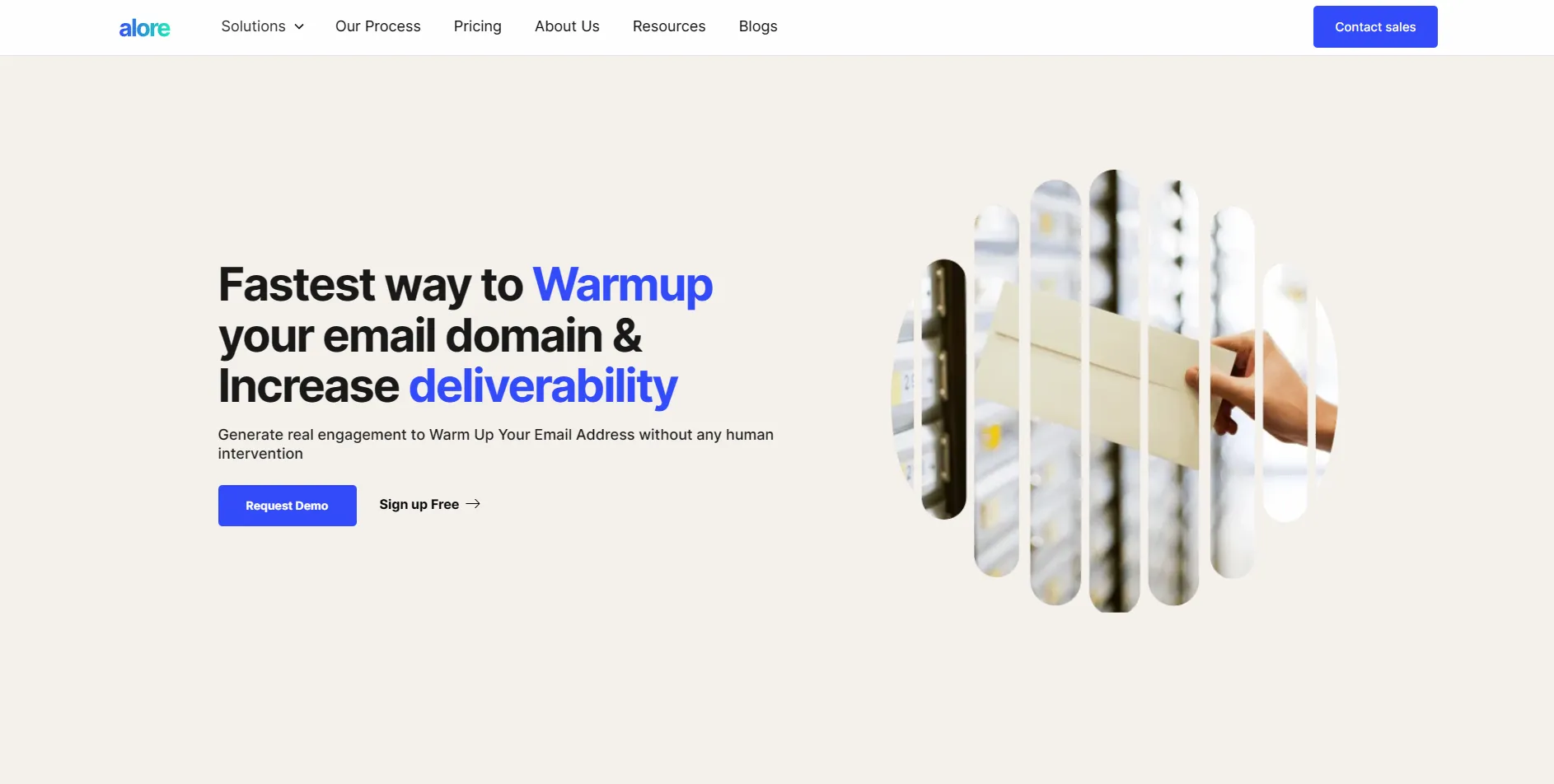
- Why the Tool is Needed: Email warming is crucial for maintaining the health of your email account and ensuring that your emails land in recipients' inboxes rather than their spam folders. It involves sending and receiving emails from different accounts to build a reputation with email service providers.
- Why Alore’s Email Warmer: Alore’s Email Warmer automates this process. It interacts with your emails by automatically sending, receiving, and engaging with them, mimicking human behavior. This increases your sender's reputation and deliverability rate.
- Benefits of Using Alore’s Email Warmer: With Alore's Email Warmer, you can ensure that your cold emails reach the intended inboxes, thus increasing the chances of engagement and response. It's an essential tool for anyone looking to implement a successful cold emailing strategy.
- Learn More: To understand more about Alore's Email Warmer, visit their website.
For Drip Campaigns: Alore's Drip Campaigner
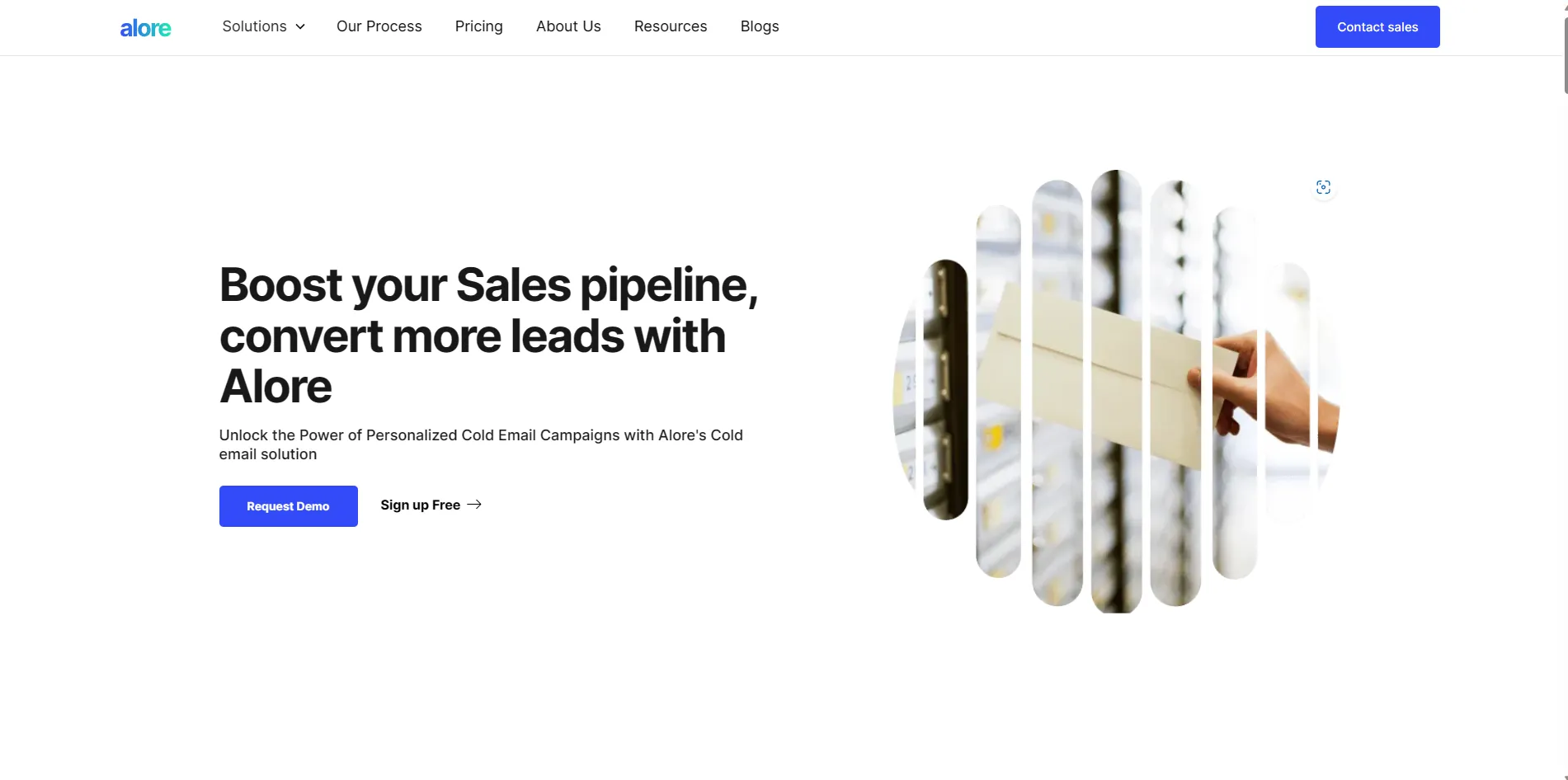
- Why the Tool is Needed: Drip campaigns are automated sets of emails sent out based on specific timelines or user actions. They are essential for nurturing leads and providing consistent touchpoints without manual intervention.
- Why Alore’s Drip Campaigner: Alore’s Drip Campaigner allows you to create and automate personalized email sequences. With its user-friendly interface, you can design complex drip campaigns that are tailored to your audience's behavior and interaction with your emails.
- Benefits of Using Alore’s Drip Campaigner: This tool enables you to maintain regular contact with your leads, gently guiding them through the sales funnel with targeted content. It's an effective way to warm up leads, increase engagement, and ultimately drive conversions.
- Learn More: Visit their website for more details on how Alore's Drip Campaigner can enhance your cold emailing efforts.
By integrating Alore's Email Warmer and Drip Campaigner into your cold emailing strategy, you can significantly improve your email deliverability and engagement, thereby enhancing the overall effectiveness of your prospecting efforts.
Segmentation and Personalization in Cold Emailing
Segmentation and personalization are crucial strategies in cold emailing, enabling you to tailor your messages to specific segments of your sales prospects, thereby increasing the relevance and effectiveness of your outreach.
Tailoring Emails to Different Segments of Your Sales Prospects
- Understanding Your Audience: Divide your prospect list into segments based on common characteristics like industry, role, company size, or specific needs. This segmentation allows for more targeted and relevant communication.
- Customizing Content for Each Segment: Develop different versions of your email content for each segment. For instance, the messaging for a C-level executive in a large corporation might differ from that of a manager in a small business.
- Using Data for Tailoring Messages: Leverage data from your CRM or marketing tools to understand the specific challenges or interests of each segment. Use this insight to make your emails more relevant to each group.
The Art of Personalizing Cold Emails for Higher Response Rates
- Personal Touch: Address the recipient by name and reference specific details about their company or role to show that the email isn't generic. Personalization can significantly increase the chances of your email being read and responded to.
- Relevant and Timely Content: Include relevant and timely content for the recipient. For example, mention recent industry news, events, or challenges they might face.
- Customized Call-to-Action (CTA): Tailor your CTA based on the segment. A CTA for a decision-maker might invite them to a strategic discussion, while for a technical lead, it might offer a product demo.
- Testing and Optimization: Continuously test different personalization strategies to see what works best for different segments. Track metrics like open rates and response rates to gauge the effectiveness of your personalization efforts.
- Ethical Considerations: While personalizing, maintain respect for privacy and avoid overstepping boundaries. Personalization should create a connection, not discomfort.
Framework 1: The P-A-R (Problem-Action-Result) Approach
The P-A-R (Problem-Action-Result) approach in cold emailing is a structured method that effectively addresses a prospect's needs. This approach focuses on identifying a problem, suggesting an action, and highlighting the potential result, making the email relevant and compelling to the reader.
Identifying Prospect's Pain Points and Offering Solutions
- Understanding the Prospect's Problem: Begin by researching and understanding the specific challenges or pain points your prospect is facing. This could involve industry-related issues, technological challenges, or operational inefficiencies that your product or service can address.
- Suggesting a Relevant Action: After identifying the problem, propose a clear and concise action that your product or service can offer as a solution. This action should directly address the identified problem, showcasing how your offering can alleviate their pain points.
- Highlighting the Expected Result: Conclude with the potential result or benefit the prospect can expect from taking the suggested action. This could be improved efficiency, cost savings, increased revenue, or any other tangible outcome that your solution provides.
Template Examples for P-A-R Structured Cold Emails
Template for Operational Efficiency:
- Problem: We've noticed that many companies in [industry] struggle with operational inefficiencies due to outdated processes.
- Action: Our [product/service] streamlines these processes, integrating seamlessly into your existing system.
- Result: Clients like [example company] have seen a 30% increase in operational efficiency within the first three months.
Template for Technological Advancement:
- Problem: Staying ahead in [industry] often means keeping up with the latest in technology, which can be challenging.
- Action: With [product/service], you can easily adopt cutting-edge technology without the usual steep learning curve.
- Result: Companies like [example company] have successfully implemented our solution, resulting in improved performance and a competitive edge.
Template for Cost-Effective Solutions:
- Problem: High operational costs are a significant concern for many in [industry].
- Action: Our [product/service] offers a cost-effective solution by [specific action or feature].
- Result: Clients have reported an average cost reduction of [percentage] within [time frame], significantly impacting their bottom line.
Framework 2: The 3-Bs (Brief, Blunt, Basic) Method
The 3-Bs method – Brief, Blunt, Basic – is a streamlined approach to cold emailing, particularly effective for busy decision-makers. This method focuses on concise, straightforward, and simple messaging that respects the recipient's time while clearly communicating the value proposition.
Crafting Concise and Direct Emails for Busy Decision Makers
- Being Brief: Keep the email short and to the point. Busy professionals appreciate brevity, as it allows them to quickly grasp the essence of your message without wading through unnecessary details.
- Being Blunt: Be clear and direct in your messaging. Avoid ambiguous language or beating around the bush. Get straight to the point, clearly stating what you offer and why it matters to them.
- Being Basic: Simplify your language. Avoid industry jargon or complex terms. The goal is to make your email easily understandable to anyone, regardless of their familiarity with your product or industry.
Examples of Brief, Blunt, and Basic Email Templates
Template for Introducing a New Product:
Template for Solving a Common Issue:
Template for Offering a Service Upgrade:
Framework 3: AIDA (Attention, Interest, Desire, Action) Model for Cold Emails
The AIDA model, which stands for Attention, Interest, Desire, and Action, is a classic marketing framework that can be highly effective in the context of cold emailing. This approach guides the email structure to captivate the recipient's attention, build their interest, create a desire for the product or service, and encourage them to take action.
Capturing Attention and Building Interest through Email
- Gaining Attention: Start your email with a compelling subject line or opening sentence that stands out. It should be intriguing enough to prompt the recipient to read further.
- Building Interest: Once you have their attention, the next step is to maintain their interest. Provide information that resonates with their needs or challenges. Use engaging language and relevant data or statistics to keep them engaged.
Crafting Desire and Call-to-Action: AIDA Email Templates
Template for Introducing a Solution:
- Subject: Revolutionize Your [process/problem] with [Product/Service]
- Body:
- Hi [Name],
- Are you tired of [common problem in the industry]? [Your Product/Service] can change that.
- Imagine [specific benefit]. That’s what we offer.
- Ready to make the switch? Let’s talk.
- Regards, [Your Name]
Template for Highlighting Unique Features:
- Subject: [Unique feature] – The Game Changer You’re Missing
- Body:
- Hello [Name],
- While most [products/services] only offer [typical feature], ours provides [unique feature] that helps you [specific benefit].
- Imagine achieving [desired outcome] with ease.
- Want to see it in action? I’d love to show you.
- Best, [Your Name]
Template for Addressing a Specific Need:
- Subject: Say Goodbye to [specific pain point]
- Body:
- Dear [Name],
- Struggling with [specific pain point]? You’re not alone. Our [Product/Service] specifically targets this issue, helping companies like yours to [specific solution].
- Picture [the positive impact of the solution].
- Interested in a demo? Just reply to this email.
- Cheers, [Your Name]
Framework 4: The BANT (Budget, Authority, Need, Timeline) Framework for Email Outreach
The BANT framework, standing for Budget, Authority, Need, and Timeline, is a time-tested method used in sales and marketing for lead qualification. When applied to email outreach, it provides a structured approach to identify and communicate with potential leads more effectively.
Qualifying Leads through BANT in Email Communication
- Budget: Your email should aim to subtly gauge the prospect's budget or their willingness to invest in a solution like yours. This can be done by referencing similar solutions and their typical costs.
- Authority: Identify if the person you are emailing has the decision-making authority or if they can influence the decision-making process. Tailor your message to either provide them with information they can pass on or to engage in a decision-making conversation directly.
- Need: Focus on understanding and addressing the prospect's specific needs in your email. Highlight how your product or service can meet these needs.
- Timeline: Try to ascertain the timeline within which the prospect is looking to implement a solution. This information can help prioritize the lead and tailor the follow-up strategy.
BANT-Based Email Templates to Identify Qualified Leads
Template for Gauging Budget and Need:
- Subject: Affordable Solutions for [specific need or problem]
- Body:
- Hi [Name],
- Many [industry] professionals are switching to cost-effective solutions like ours for [specific need].
- Our clients typically see ROI in [time period]. Is budgeting for such a solution on your radar this quarter/year?
- Best, [Your Name]
Template for Assessing Authority and Timeline:
- Subject: Quick Implementation for [Product/Service]
- Body:
- Hello [Name],
- Are you exploring [solutions] that can be implemented within [specific timeline]?
- I’d be happy to discuss how our [product/service] fits into your current plans. Who else from your team should join our conversation?
- Regards, [Your Name]
Comprehensive BANT Template:
- Subject: Tailored Solutions for [Company Name]
- Body:
- Dear [Name],
- I’m reaching out to understand your current needs regarding [specific service/product]. Are you the right person to discuss this with at [Company Name]?
- Our solutions range from [price range], with most clients seeing results in [time frame]. Could this align with your current plans and budget?
- Looking forward to your thoughts,
- [Your Name]
Utilizing the BANT framework in your email outreach helps in effectively qualifying leads right from the first point of contact. This approach ensures that your follow-up efforts are concentrated on leads that have a higher probability of conversion, making your overall sales process more efficient
Framework 5: The FAB (Features, Advantages, Benefits) Technique
The FAB technique, which stands for Features, Advantages, and Benefits, is a persuasive approach in sales and marketing communications, particularly effective in email outreach. This method focuses on outlining the features of a product or service, explaining the advantages they bring, and ultimately highlighting the benefits for the customer.
Highlighting Product/Service Features, Advantages, and Benefits in Emails
- Features: Start by clearly stating the features of your product or service. These are the factual statements about what your offering includes or provides.
- Advantages: For every feature mentioned, describe its advantages. This means explaining how the feature improves upon existing solutions or offers something new.
- Benefits: Translate these advantages into benefits, showcasing how they directly impact and add value to the customer's life or business. Benefits should address the customer's needs, goals, or pain points.
FAB Email Templates to Showcase Your Offering
Template for a SaaS Product:
- Subject: Elevate Your Team's Productivity with [Product Name]
- Body:
- Hi [Name],
- Our platform [Product Name] features an intuitive AI-driven task manager (Feature). This makes project tracking more efficient than traditional methods (Advantage).
- You'll experience a significant boost in team productivity and project turnaround times (Benefit).
- Would you be interested in a demo?
- Best, [Your Name]
Template for a Health Product:
- Subject: Transform Your Health Regime with [Product Name]
- Body:
- Dear [Name],
- [Product Name] is formulated with natural, high-potency ingredients (Feature), ensuring effective results without any side effects (Advantage).
- Experience improved health and vitality, leading to a more energetic and productive lifestyle (Benefit).
- Can I send you more information?
- Regards, [Your Name]
Comprehensive FAB Template for Services:
- Subject: Optimizing Your Operations with [Service Name]
- Body:
- Hello [Name],
- Our service [Service Name] includes 24/7 customer support and a dedicated account manager (Feature), ensuring that your queries and needs are addressed promptly (Advantage).
- You'll enjoy peace of mind and more time to focus on growing your business (Benefit).
- Let's discuss how [Service Name] can specifically help your business.
- Cheers, [Your Name]
Using the FAB technique in your email outreach can significantly enhance the persuasive power of your message. By systematically breaking down what you offer and how it benefits the recipient, you can create a compelling narrative that resonates with the needs and desires of your potential customers.
Analyzing and Optimizing Cold Email Campaigns
Analyzing and optimizing cold email campaigns are critical steps in ensuring their success. By measuring key metrics and continuously refining your approach, you can enhance the effectiveness of your cold emailing efforts and improve response rates.
Measuring the Success of Your Cold Emailing Efforts
- Open Rate and Click-Through Rate (CTR): Track how many recipients are opening your emails and clicking on links within them. These metrics are indicators of how compelling your subject line and content are.
- Response Rate: Monitor the percentage of recipients who respond to your emails. A low response rate could indicate a need to refine your message or target audience.
- Conversion Rate: Measure how many email recipients are taking the desired action, such as signing up for a webinar, requesting more information, or making a purchase. This rate helps assess the overall effectiveness of the campaign.
- Bounce Rate: Keep an eye on the number of emails that didn't reach the recipient's inbox. A high bounce rate may suggest issues with email deliverability or the quality of your email list.
- Unsubscribe Rate: Monitor how many people are opting out of your emails. While some unsubscribes are normal, a high rate could indicate that your content is not resonating with your audience.
Techniques for Improving Cold Email Response Rates
- Refining Email Content: Regularly update and refine your email content based on performance metrics. Experiment with different subject lines, email formats, and calls to action to see what yields the best results.
- Segmentation and Personalization: Further segment your email list and personalize your emails. Tailored content that speaks directly to the recipient's needs and interests is more likely to elicit a response.
- A/B Testing: Conduct A/B tests on various elements of your emails, such as subject lines, email length, tone of voice, and CTAs. This will help you understand what resonates best with your audience.
- Timing and Frequency: Experiment with different sending times and frequencies to find the optimal schedule for your audience. The right timing can significantly impact open and response rates.
- Feedback Loop: Encourage and analyze feedback from recipients. Understanding why prospects do or do not engage can provide valuable insights for future campaigns.
- Staying Up to Date: Keep abreast of the latest trends in email marketing and incorporate new techniques and technologies that could enhance the performance of your campaigns.
You can increase your effectiveness by systematically analyzing and optimizing your cold email campaigns. Continuous improvement, driven by data and feedback, is key to developing a successful cold emailing strategy that resonates with your audience and achieves your marketing goals.
Tools and Strategies for Effective Prospecting
Hunter
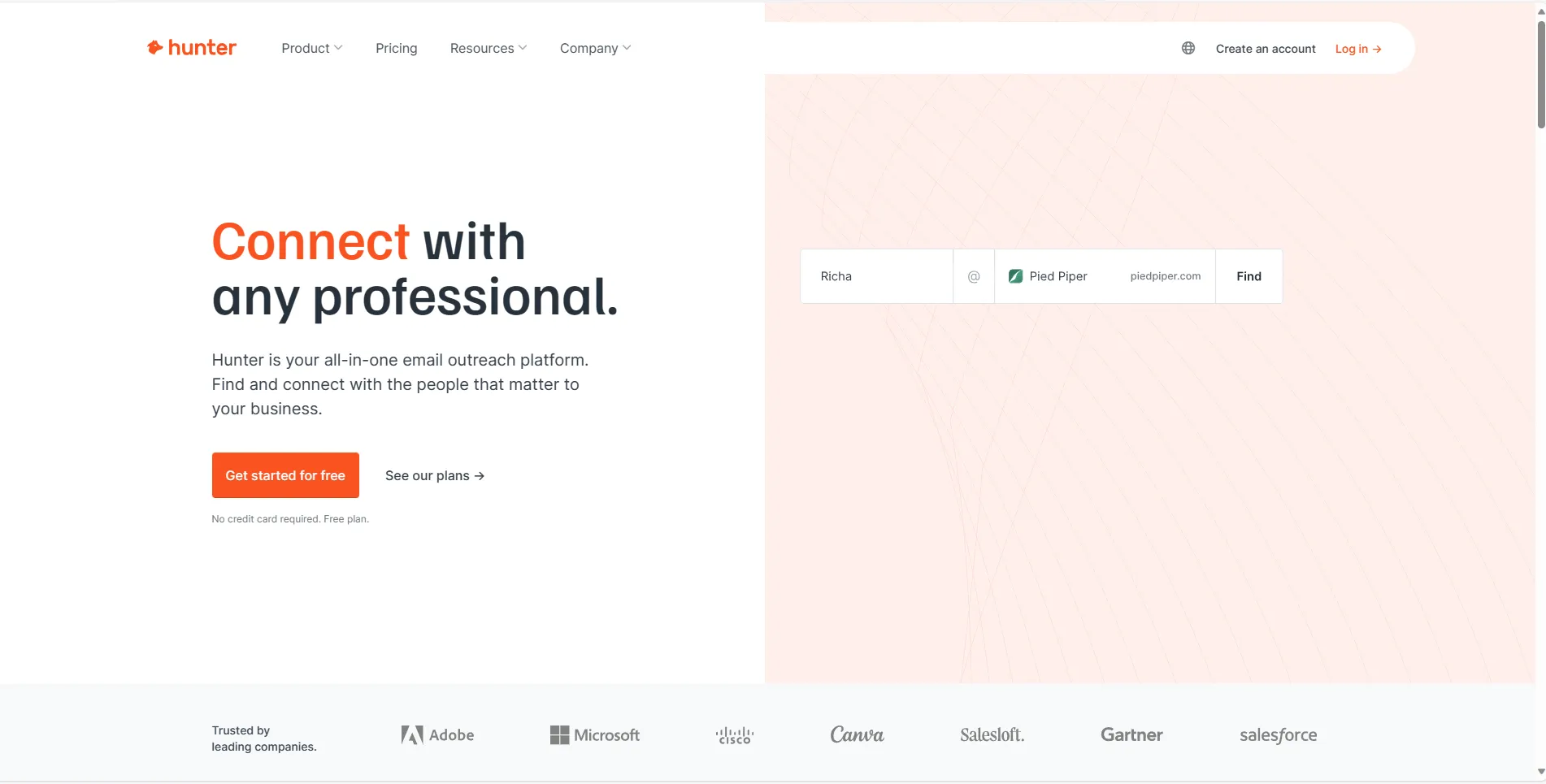
- Website: Hunter.io
- Key Features: Email finding tool, domain search, email verification.
- Who Should Use It: Ideal for marketers, recruiters, and sales professionals looking for accurate email addresses.
- Advantages: Offers a straightforward way to find professional email addresses, enhancing email outreach.
- G2 Rating: 4.4, based on 535 ratings.
Kixie
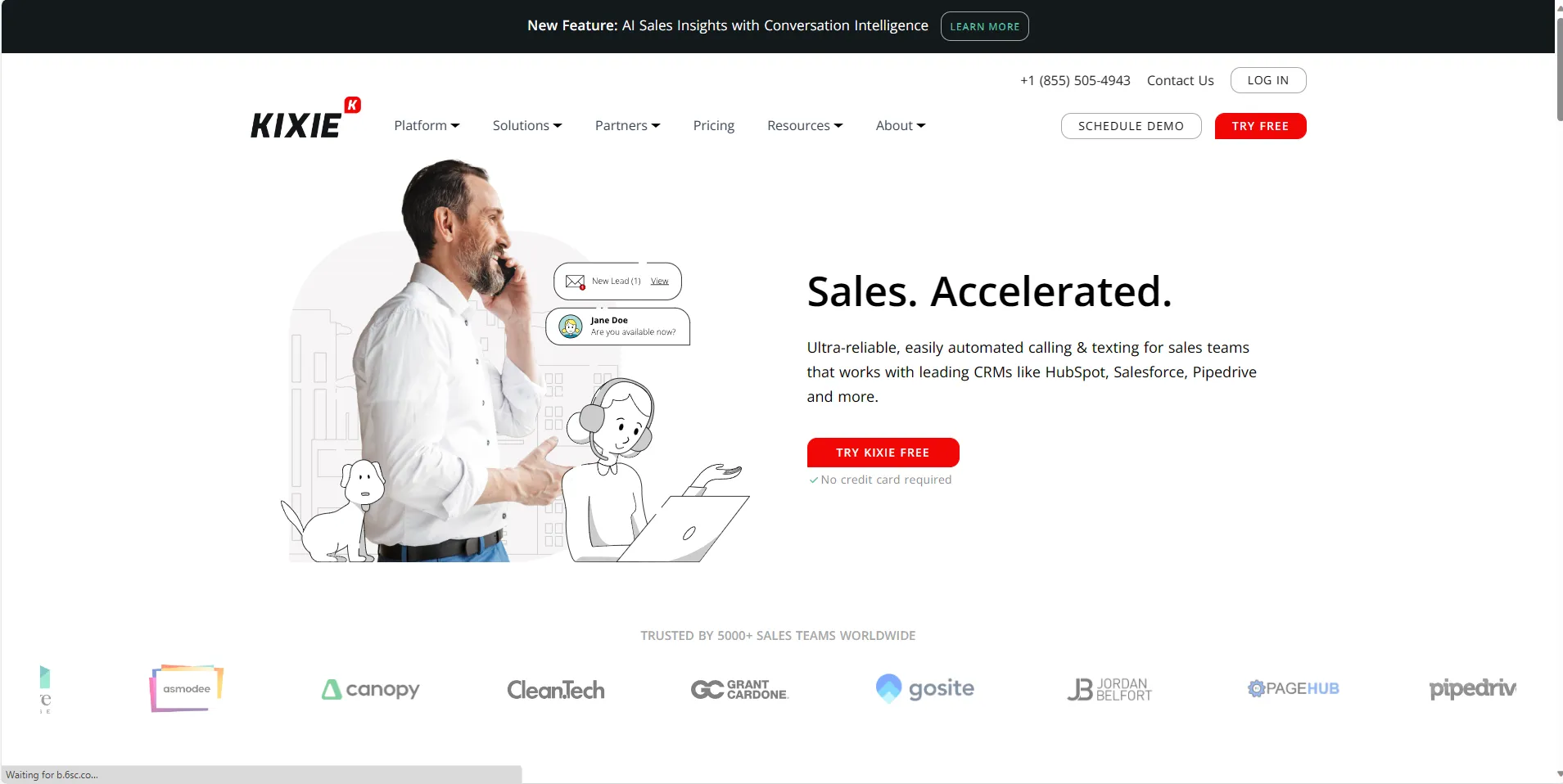
- Website: Kixie.com
- Key Features: Integrated calling and SMS, CRM integration, call recording and analytics.
- Who Should Use It: Sales teams seeking a powerful, CRM-integrated telephony solution.
- Advantages: Enhances phone-based prospecting with efficient CRM integration and call analytics.
- G2 Rating: 4.7, based on 542 ratings.
LinkedIn Sales Navigator
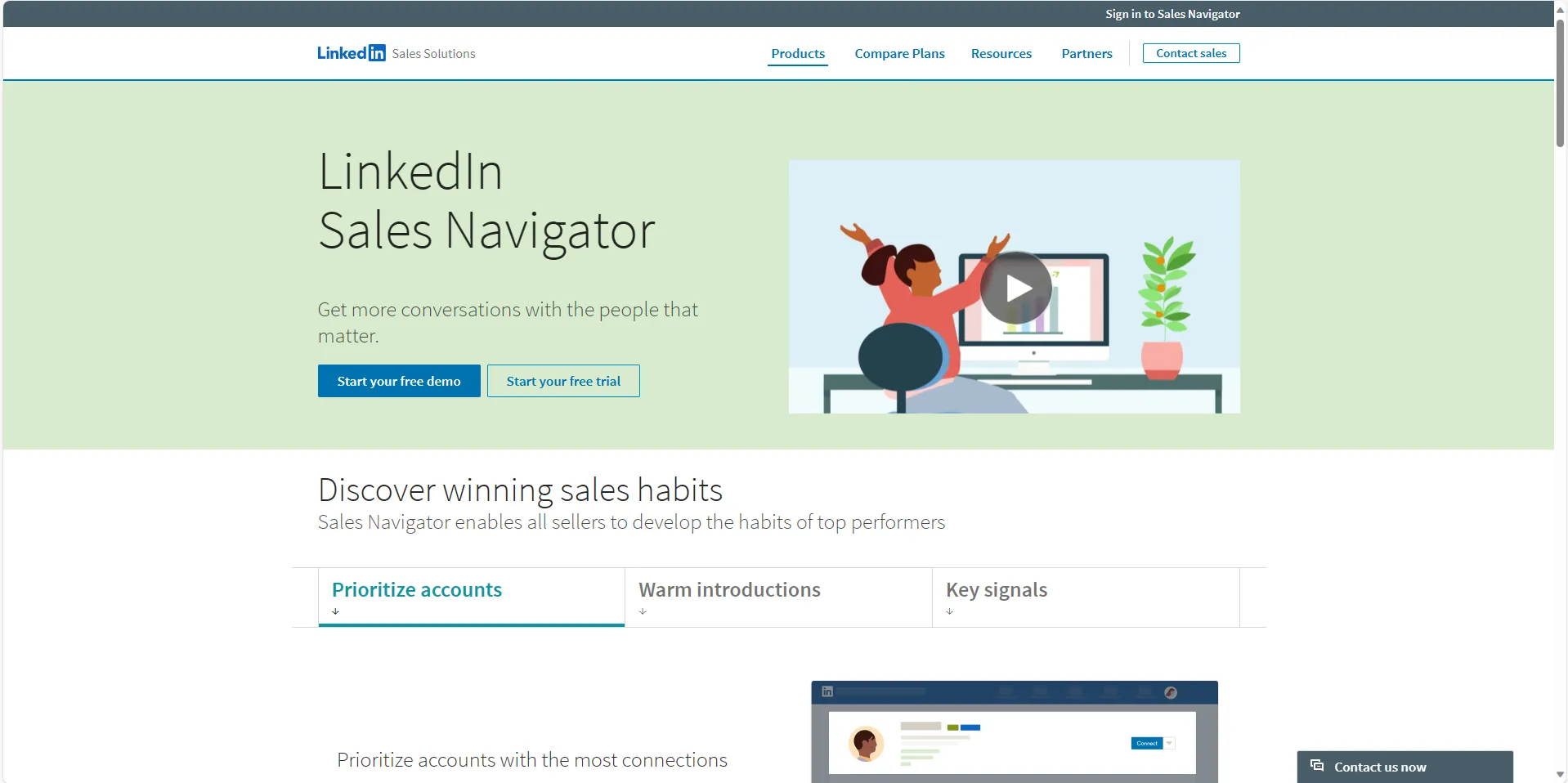
- Website: LinkedIn Sales Navigator
- Key Features: Advanced lead and company search, sales insights, InMail messaging.
- Who Should Use It: Sales professionals aiming to leverage LinkedIn’s network for targeted prospecting.
- Advantages: Offers in-depth insights and a wide network for targeted and personalized sales outreach.
- G2 Rating: 4.3, based on 1,827 ratings.
Crunchbase
- Website: Crunchbase
- Key Features: Business information and insights, company tracking, industry trends.
- Who Should Use It: Businesses and individuals looking for in-depth information on companies and industries.
- Advantages: Provides valuable data for market research and prospecting in various industries.
- G2 Rating: 4.5, based on 335 ratings.
Apollo.io
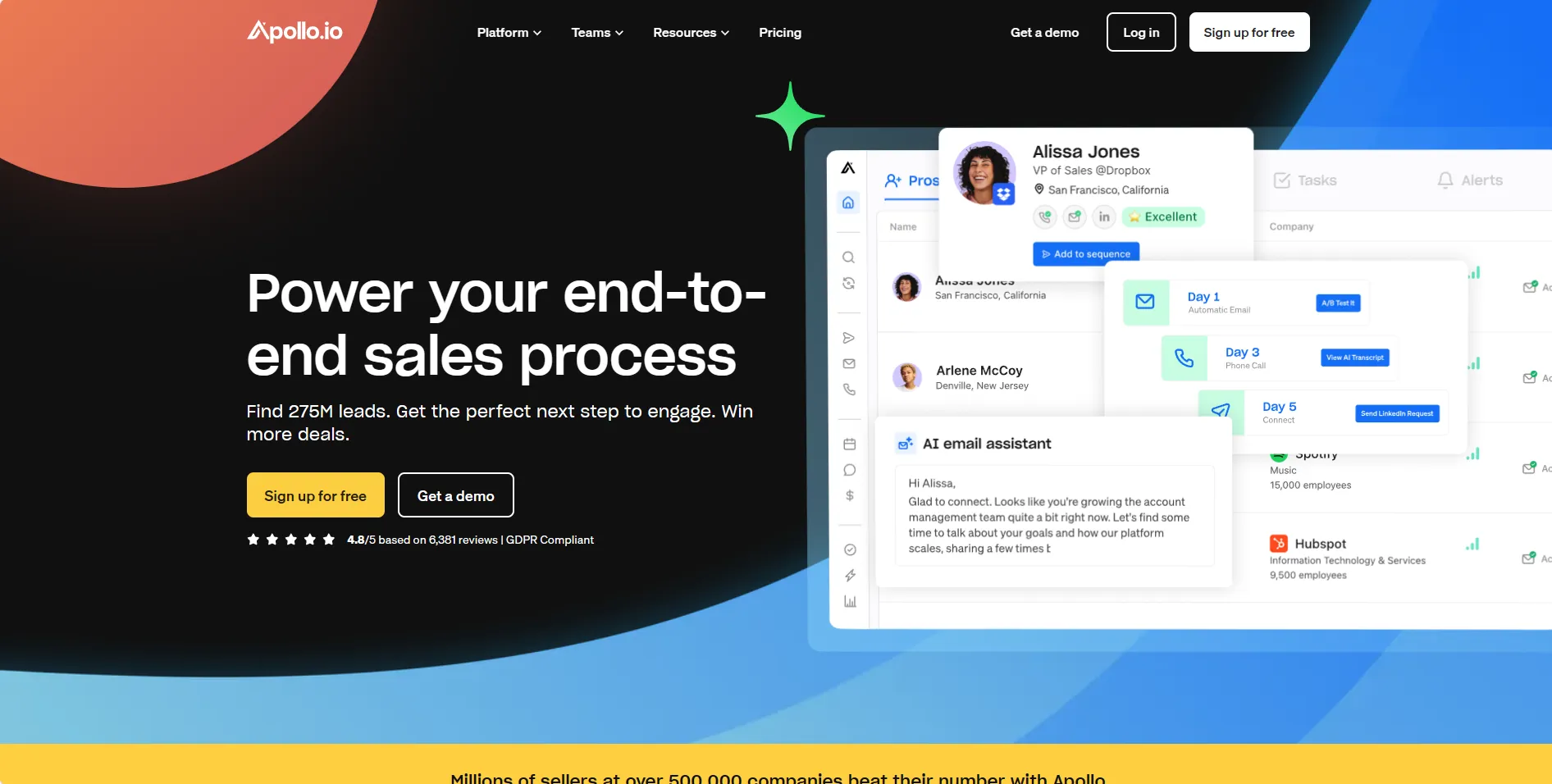
- Website: Apollo.io
- Key Features: Email tracking, lead scoring, database of B2B contacts.
- Who Should Use It: Sales and marketing teams needing a comprehensive platform for outreach and engagement.
- Advantages: Combines a large database with tools for outreach, tracking, and engagement.
- G2 Rating: 4.8, based on 6,800 ratings.
Lusha
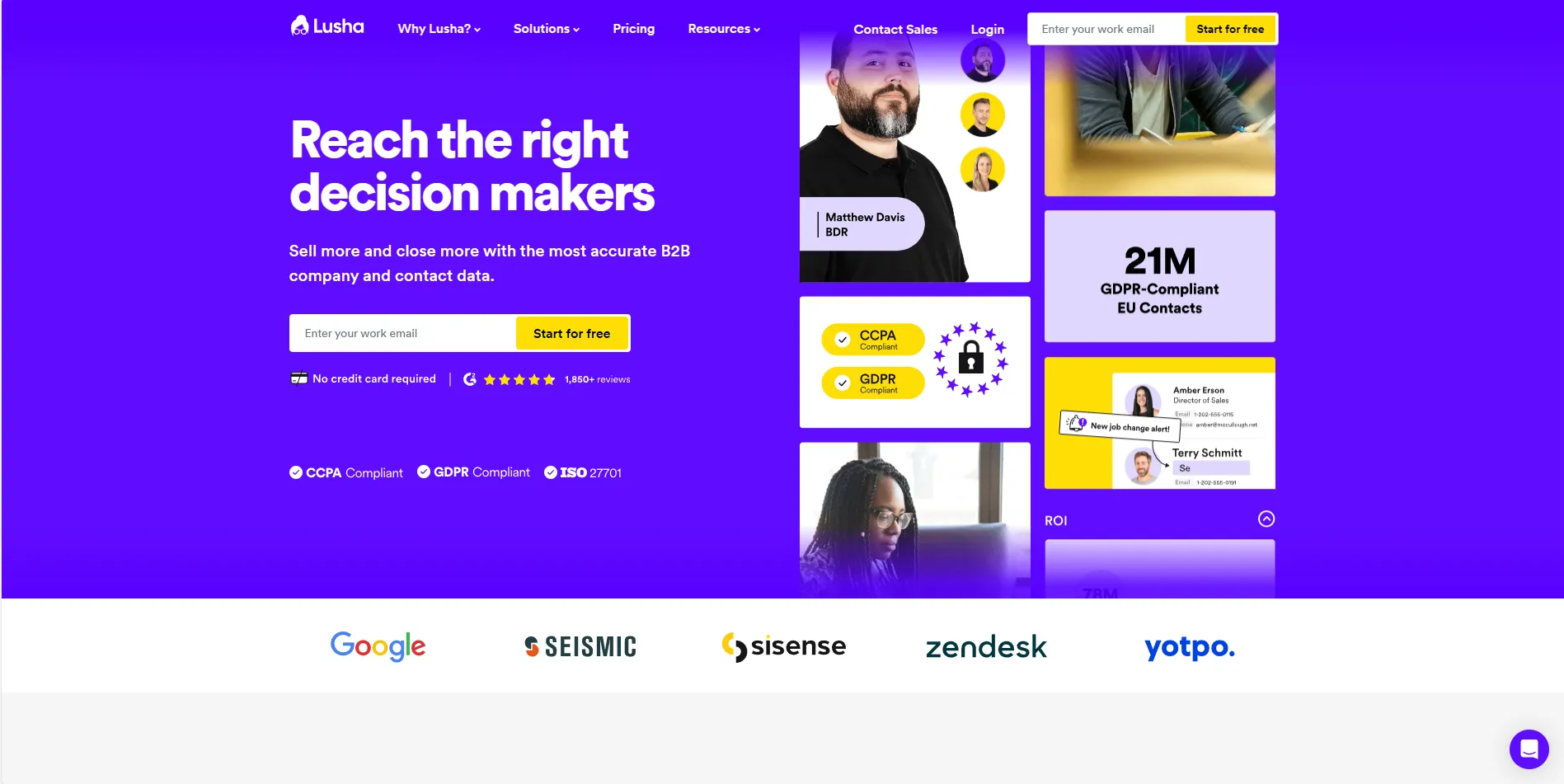
- Website: Lusha
- Key Features: Contact and company information, CRM integration, data enrichment.
- Who Should Use It: Recruiters, salespeople, and marketers looking for reliable B2B contact information.
- Advantages: Provides accurate, up-to-date contact information to streamline sales prospecting.
- G2 Rating: 4.3, based on 1,443 ratings.
Datanyze
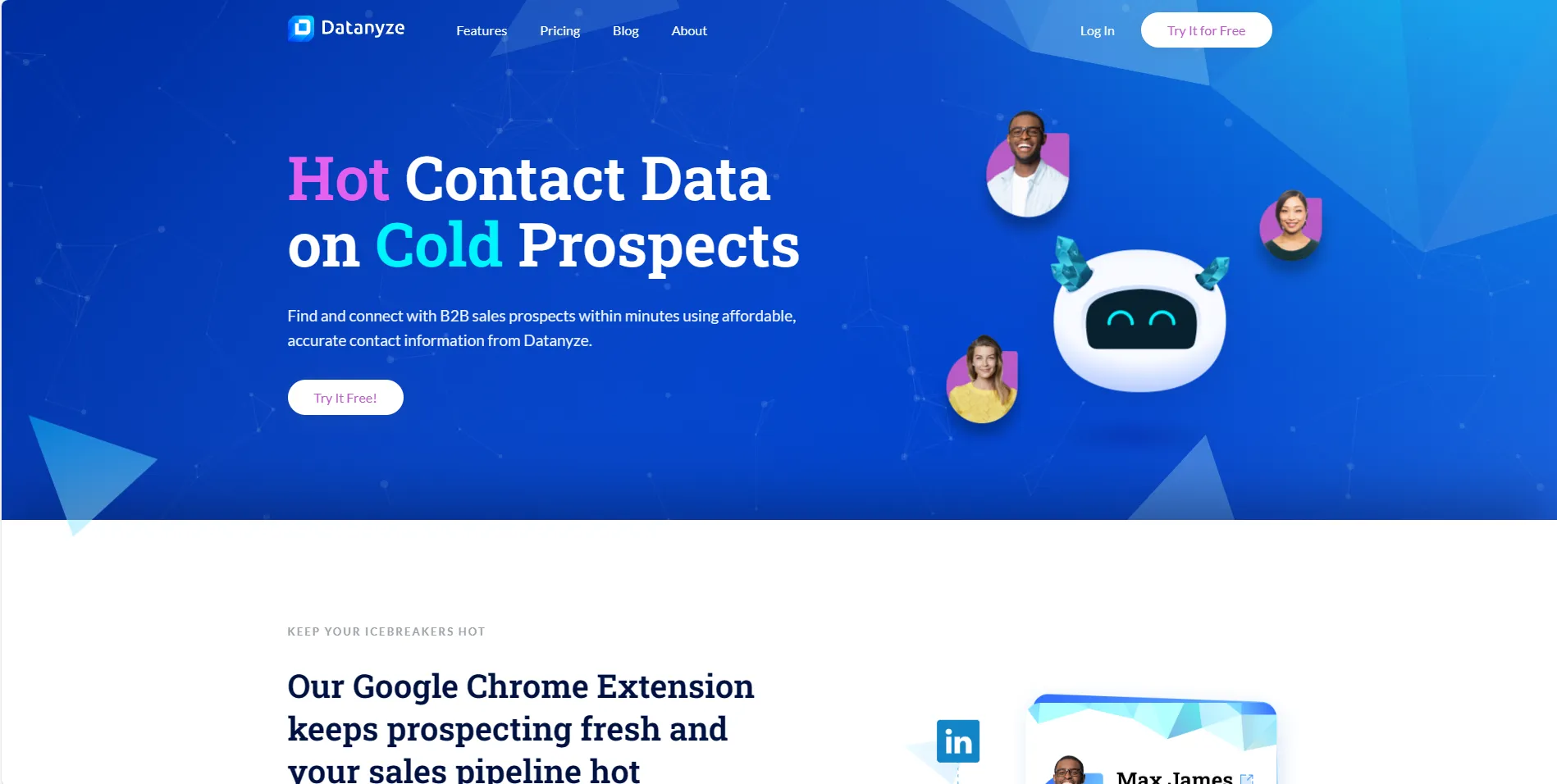
- Website: Datanyze
- Key Features: Technology tracking, sales intelligence, market analysis.
- Who Should Use It: Sales and marketing professionals focused on technology-driven markets.
- Advantages: Offers insights into technology usage of prospects for more informed sales approaches.
- G2 Rating: 4.4, based on 445 ratings.
Each of these tools offers distinct features and benefits that are crucial for modern sales prospecting strategies, providing sales professionals with the resources needed for more effective and efficient prospecting practices.
Sales Reps: The Frontline of Prospecting
Sales representatives play a pivotal role in the success of any sales strategy, often being the first point of contact between a business and its potential customers. Their effectiveness in prospecting can significantly impact the overall sales pipeline.
Empowering Sales Reps in the Prospecting Journey
- Comprehensive Training: Provide sales reps with thorough training in sales prospecting techniques, including the use of various sales tools like LinkedIn Sales Navigator and CRM systems. This knowledge empowers them to identify and engage with potential customers more effectively.
- Access to Necessary Tools: Equip sales reps with the necessary tools and resources, such as sales prospecting tools, contact databases like Lusha or Apollo.io, and analytics platforms like Datanyze. These tools enable them to conduct informed and efficient prospecting.
- Regular Skill Development: Encourage continuous learning and skill development through workshops, webinars, and training sessions. This keeps sales reps updated on the latest sales strategies and market trends.
- Motivation and Incentives: Motivate sales reps through incentives and recognition programs. This not only boosts morale but also encourages a more proactive approach to prospecting.
Sales Reps’ Role in Effective Prospecting
- First Point of Contact: Sales reps often serve as the initial point of interaction with prospects, making their approach crucial in setting the tone for the potential relationship.
- Understanding Customer Needs: They are responsible for understanding the needs and pain points of prospects, using this insight to tailor their sales pitch effectively.
- Building Relationships: Sales reps play a key role in building and nurturing relationships with potential customers, which is essential for converting prospects into loyal clients.
- Feedback and Market Insights: Their interactions with prospects provide valuable feedback and market insights, which can be used to refine sales strategies and approaches.
Navigating the Sales Pipeline and Funnel
Navigating the sales pipeline and funnel is a crucial aspect of sales management, requiring strategic planning and execution to guide potential customers from initial contact to the final closing of a deal.
From Initial Contact to Closing: Managing the Sales Funnel
- Initial Contact: The beginning of the sales funnel involves reaching out to potential leads through various channels like cold calling, email campaigns, social media engagement, and networking events. The goal here is to generate interest and awareness.
- Qualification of Leads: After initial contact, it's essential to qualify leads using criteria such as BANT (Budget, Authority, Need, Timeline) or CHAMP methodologies. This helps in focusing efforts on prospects with the highest conversion potential.
- Building Relationships: Engage with qualified leads through personalized communication, addressing their specific needs and pain points. Utilize CRM tools to track interactions and ensure consistent follow-ups.
- Presentation and Proposal: Tailor your presentations and proposals to align with the prospect’s business objectives and challenges. Use this stage to clearly demonstrate the value and ROI of your product or service.
- Negotiation and Closing: Handle objections effectively and negotiate terms that are agreeable to both parties. Focus on closing the deal with a clear understanding of the prospect's purchasing process.
- Post-Sale Follow-Up: Maintain the relationship after the sale to encourage repeat business and referrals. This includes checking in with customers, providing ongoing support, and keeping them updated on new offerings.
Strategies for Maintaining a Robust Sales Pipeline
- Continuous Lead Generation: Consistently engage in activities that generate new leads, such as networking, marketing campaigns, and prospecting. This helps in keeping the pipeline full at all stages.
- Regular Pipeline Review: Conduct regular reviews of the sales pipeline to identify bottlenecks and areas for improvement. Use data analytics and CRM reporting tools to gain insights into the health of the pipeline.
- Sales Team Alignment: Ensure that the sales team is aligned with the sales process and understands their role at each stage of the funnel. Provide them with the necessary training and resources.
- Leveraging Technology: Utilize sales prospecting tools and CRM software to automate and streamline the sales process. This can increase efficiency and provide valuable insights into customer behavior and preferences.
- Adapting to Market Changes: Stay informed about market trends and adapt your sales strategies accordingly. This includes updating the sales approach, messaging, and techniques to align with current market dynamics.
Digital Prospecting: Social Media and Beyond
Leveraging Social Media for Sales Prospecting
In the modern sales landscape, digital prospecting, particularly through social media, has become an indispensable part of any effective sales strategy. It offers unique avenues to connect with and understand potential customers.
- Identifying Prospects on Platforms: Use platforms like LinkedIn, Twitter, and Facebook to identify potential prospects. Tools like LinkedIn Sales Navigator can be particularly effective for targeted searches based on industry, company size, and role.
- Engaging with Content: Actively engage with the content posted by potential prospects or key industry figures. Commenting, sharing, and reacting to posts can increase visibility and establish your presence in the digital space.
- Sharing Valuable Content: Regularly post relevant and valuable content on your social media profiles. This can include industry insights, company updates, and helpful resources. High-quality content positions you as a knowledgeable authority in your field.
- Utilizing Hashtags and Groups: Participate in relevant conversations by using targeted hashtags on platforms like Twitter and LinkedIn. Join and engage in industry-specific groups and forums to expand your network and discover new prospects.
- Direct Outreach via Social Media: Use social media platforms for direct outreach to potential leads. Craft personalized messages that reflect your understanding of their business needs and how your service or product can add value.
- Monitoring Social Media for Leads: Implement social listening tools to monitor mentions of specific keywords related to your industry or product. This can help in identifying prospects who are actively seeking solutions that you can provide.
- Analyzing Social Media Interactions for Insights: Utilize analytics tools to track engagement on your posts and understand the interests of your audience. This data can guide your content strategy and help in refining your approach to prospecting.
Conclusion and Next Steps
As we conclude our comprehensive exploration of sales prospecting, it's evident that this process is a dynamic and multifaceted aspect of the sales cycle. From leveraging the latest digital tools and strategies to understanding the nuances of human interaction, effective prospecting is a skill that combines technology, psychology, and strategy.
Reflecting on Key Learnings
Throughout this exploration, we've delved into various facets of sales prospecting, including the use of different methodologies like GPCTBA/C&I, BANT, and CHAMP, the significance of digital platforms like social media, and the importance of personalization in communication.
We've also highlighted the role of sales reps as the front line of prospecting and the importance of managing the sales funnel effectively.
Next Steps for Implementing Effective Prospecting
- Assess Current Strategies: Review your current sales prospecting strategies and identify areas for improvement. Consider how the methodologies and tools discussed can be integrated into your existing processes.
- Train Your Team: Ensure that your sales team is well-equipped with the necessary skills and knowledge. Regular training sessions on new tools and techniques can keep them updated and effective.
- Leverage Technology: Invest in the right tools, whether it's CRM software, lead generation platforms, or social media tools, to streamline your prospecting efforts and gain valuable insights.
- Track and Measure Performance: Implement a system to track the performance of your sales prospecting strategies. Use data-driven insights to make informed decisions and adjustments.
- Stay Adaptable: The world of sales is ever-evolving, and so should your prospecting strategies. Stay adaptable and open to new ideas and approaches, ensuring that your methods remain effective in the changing market landscape.
- Continuous Improvement: Sales prospecting is a journey, not a destination. Continuously seek to improve and refine your strategies, staying committed to learning and growth.





.jpg)

.jpg)
